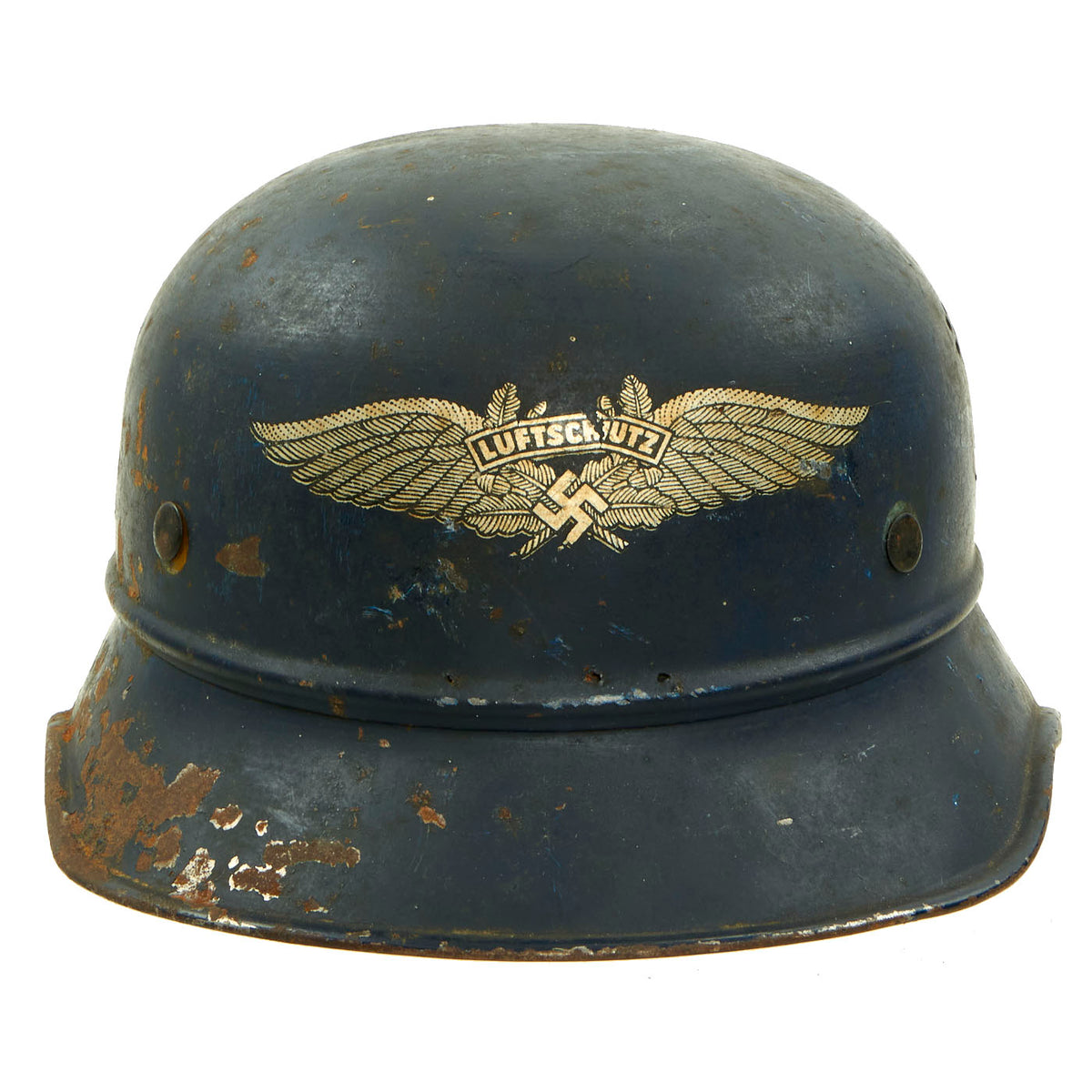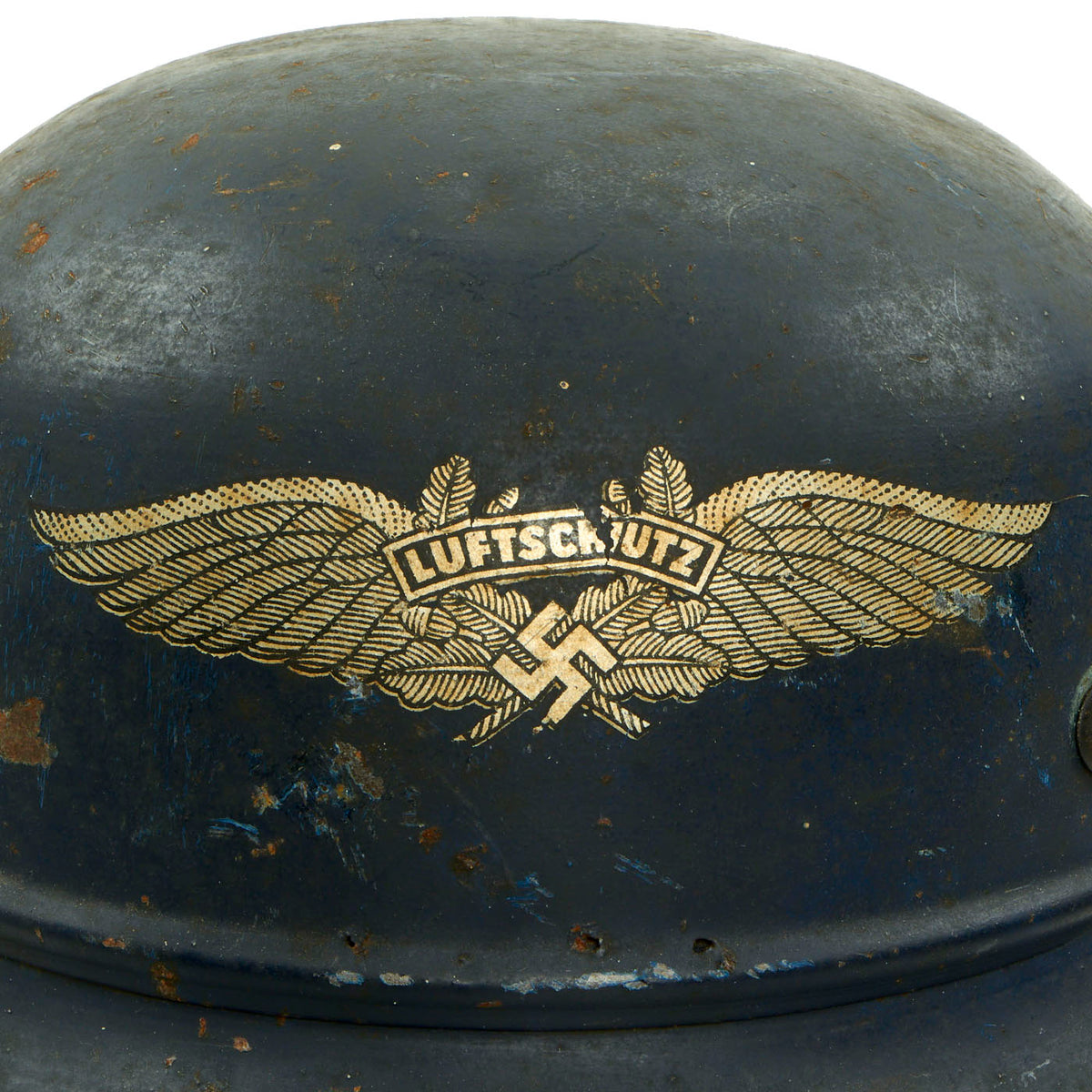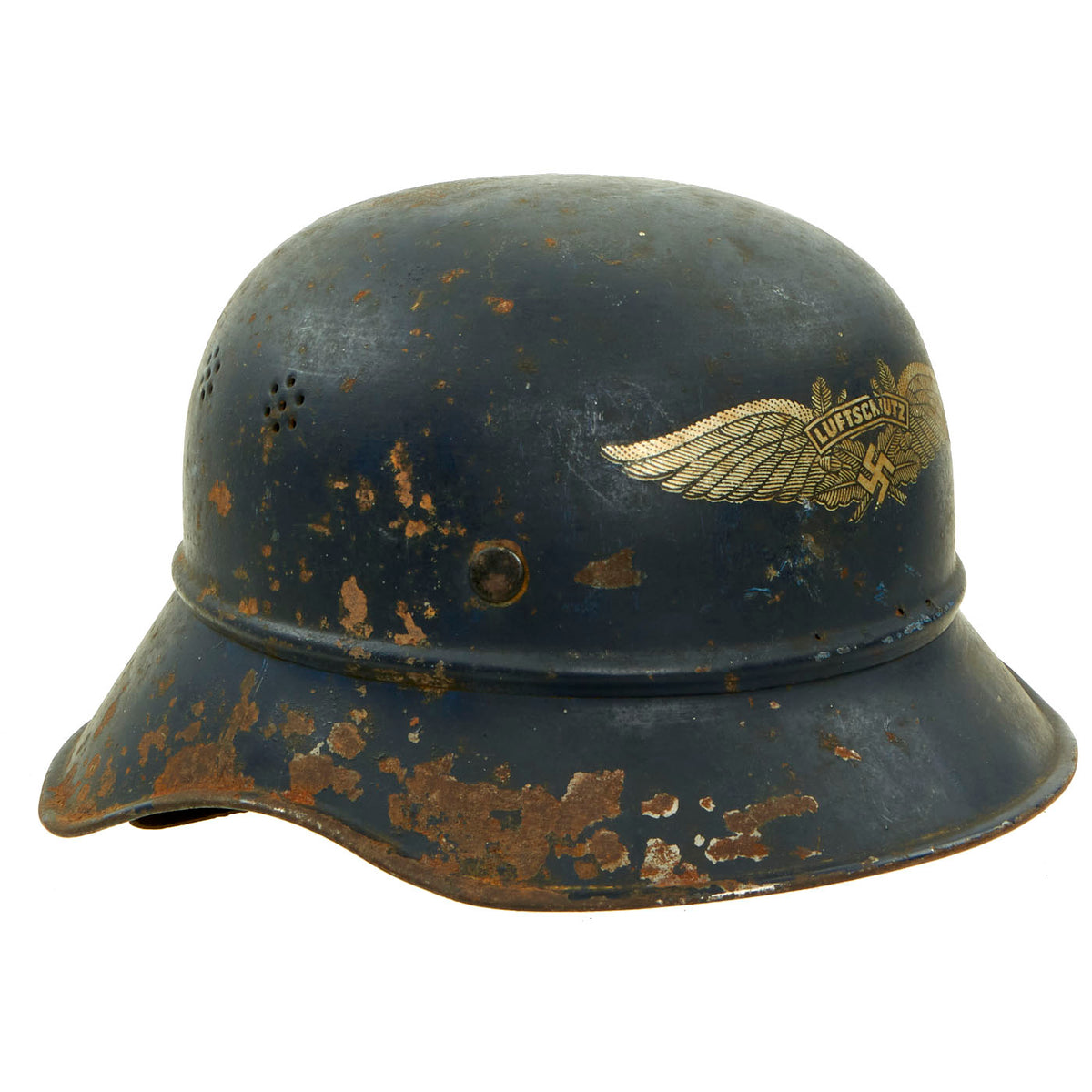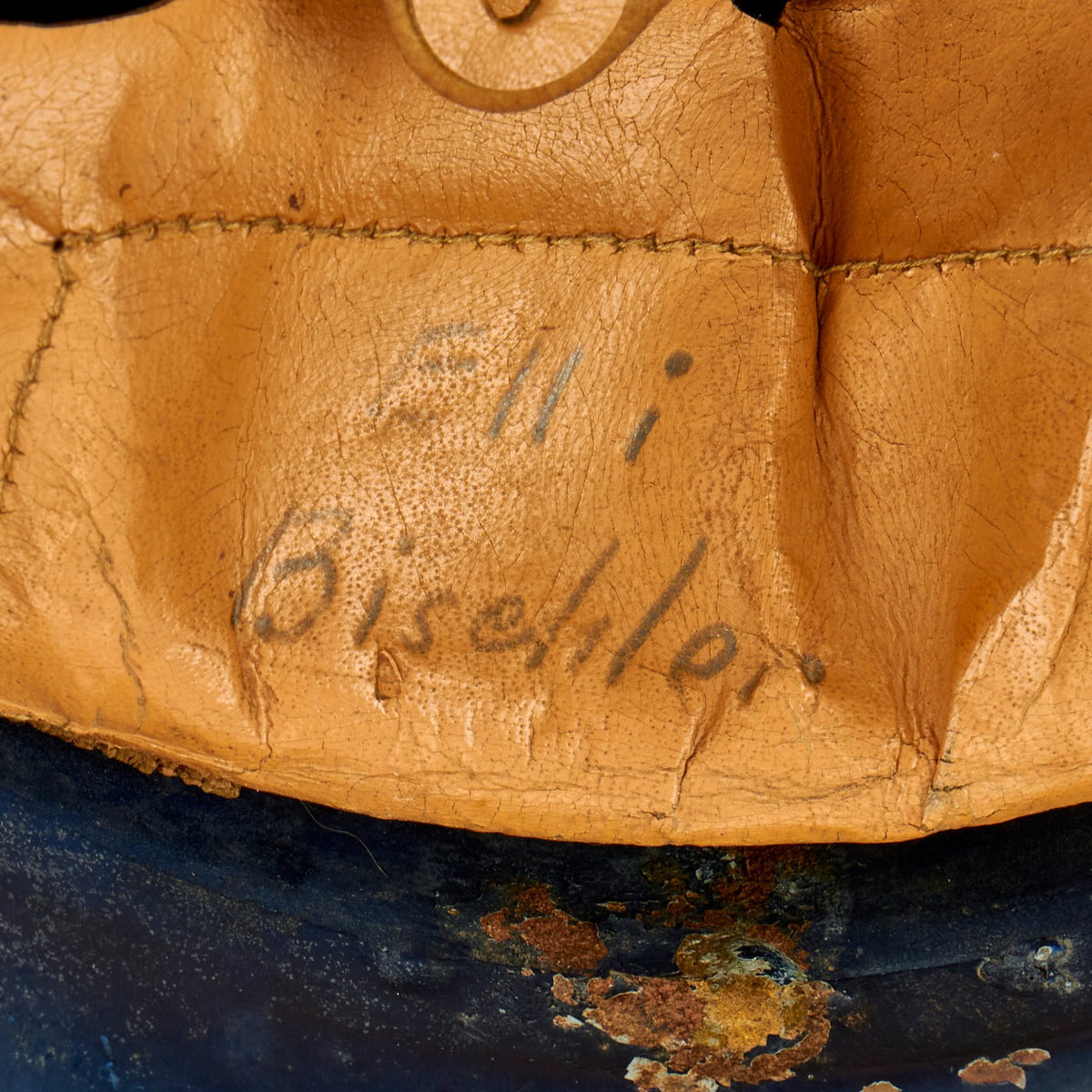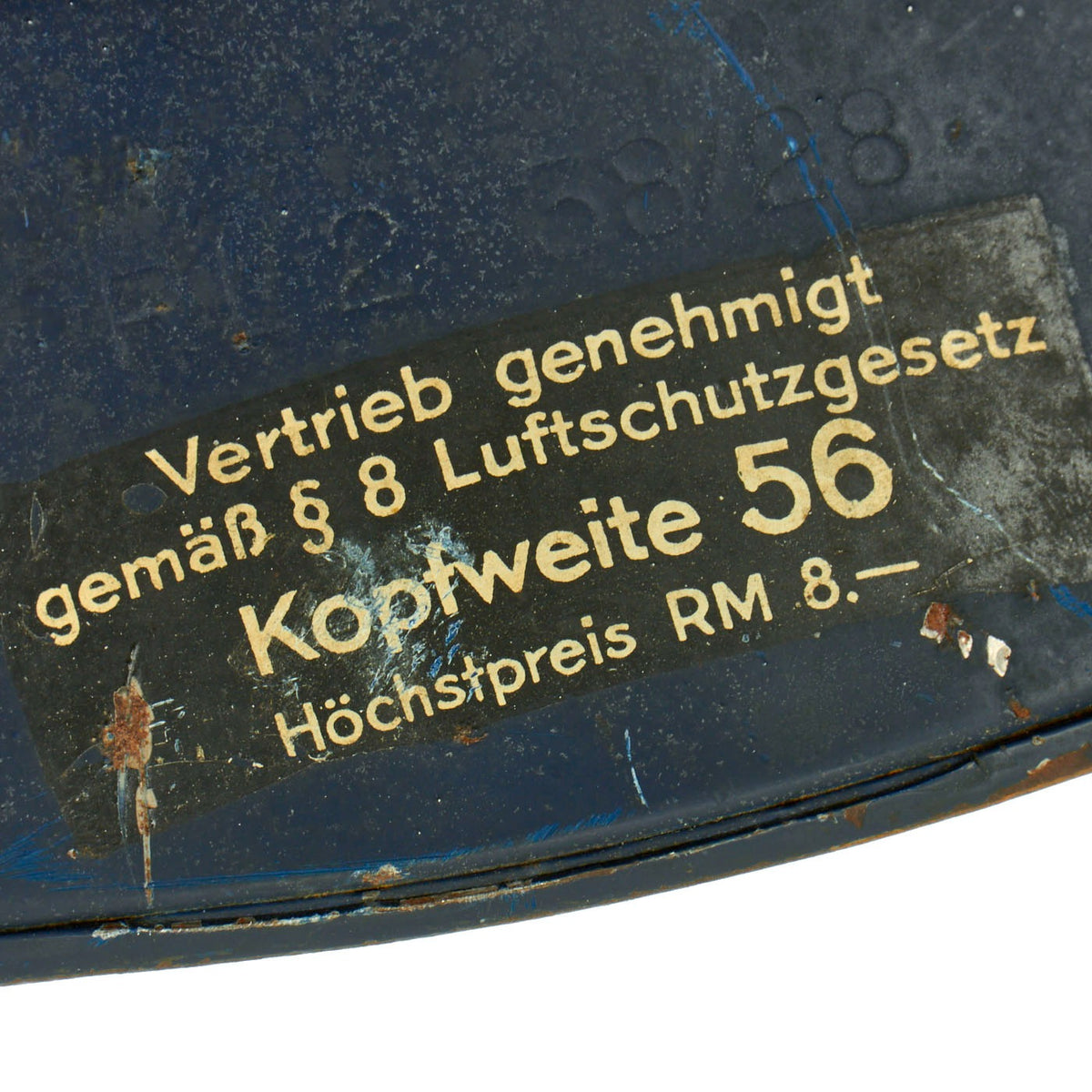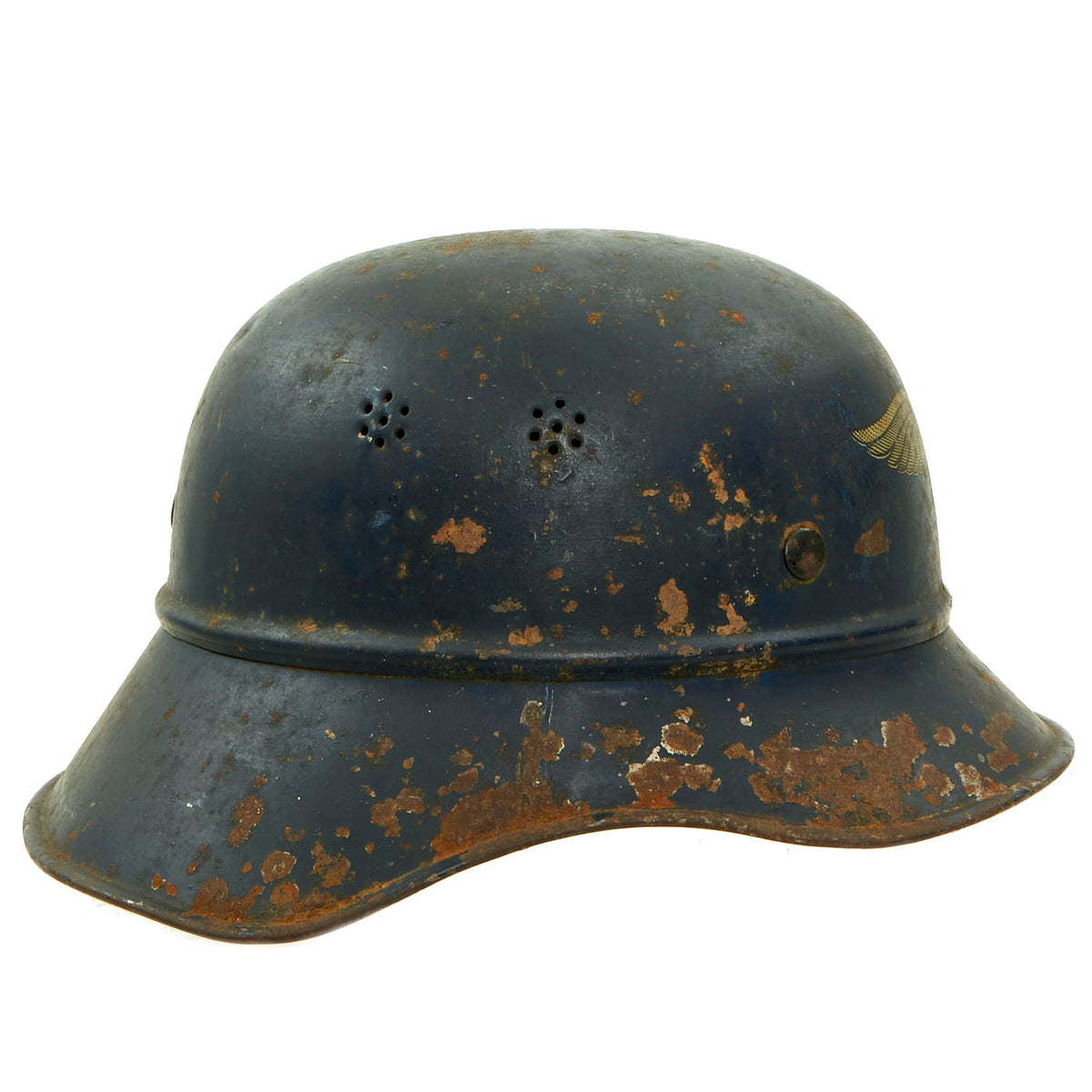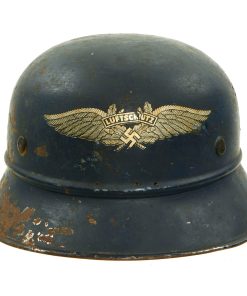Original German WWII M38 Luftschutz Gladiator Air Defense Helmet with Preßstoff Liner & Chinstrap – dated 1938 Original Items
$ 395,00 $ 118,50
Original Item: Only One Available. This is a very nice original M1938 Beaded Luftschutz Gladiator German helmet, complete with a Preßstoff liner & chinstrap. The exterior of this German helmet retains about 80% of the original dark blue paint, and does show wear and paint loss, particularly on the right side of the helmet. This has allowed the steel of the helmet to oxidize. There is also a small dent on the upper left crown, and overall overall wear and scuffing. The helmet still has all three of the original liner hollow rivets, with most of the paint intact. The Luftschutz decal is clean and over 90% complete, with a few scuffs and only light wear.
The inner skirt is maker marked with stamping into the steel with RL 2 – 38 / 28. These markings would seem to indicate that the helmet was made in 1938, though we do not know if any records were kept of the maker. It may be that it was made under a 1938 contract. Below this is a complete original Luftschutz helmet information decal:
Vertrieb genehmigt
gemäß § 8 Luftschutzgesetz
Kopfweite 56
Höchstpreis RM 8.–
This indicates the pricing and distribution information: Distribution approved according to Section 8 Air protection legislation. Head Width 56. Highest Price 8 Reichsmark. The markings are fully clear, with just a bit of wear.
The liner in this helmet is made from Preßstoff pressed paper, or some other form of early faux leather. It is very much in the WWI style, with three large panels with two fingers on each, and a pad behind each. There is a name on the liner, possibly “Elli Biselilor”?, which we are unable to find any information on. The original top tie is missing, and the liner is a bit delicate due to age related deterioration. The liner band is pressed fiber liner, and the cork pads are still present between the liner band and shell. The chin strap is also Preßstoff, and is in very good condition, with just a bit of delamination in areas.
Overall a very good German WWII M38 Luftschutz helmet with a very nice decal and Preßstoff rigging. Ready to add to your collection and display!
Formed in late 1932 the Deutsches Luftschutzverband, (German Air Protection League), was a voluntary organization designed to provide civil air raid protection in large civilian centers. Shortly after AH ascension to power the Deutsches Luftschutzverband was restructured and placed under the supervision of the Reichsluftfahrtministerium, (National Air Ministry), under the control of Hermann Göring. On April 29TH 1933 the Deutsches Luftschutzverband was renamed RLB, Reichs Luftschutz Bund, (National Air Raid Protection League) and was given status as an official national organization tasked with all aspects of civil air raid defense. The RLB remained a voluntary organization with a small cadre of paid, full-time uniformed officials to oversee the organization’s functions until June 1935 when obligatory service was introduced. Only the most basic uniform and equipment items were supplied to the cadre personnel, with the rest having to be bought personally by members. On September 26TH 1938 a specific helmet for RLB personnel was introduced that incorporated a raised horizontal “bead” between the visors and crown. These helmets commonly called the “Gladiator” style were supplemented with M35, M40 and M42 helmets that also incorporated a raised horizontal “bead” between the visors and crown. The Luftschutz also utilized a variety of captured helmets.
Presstoff (also Preßstoff or Pressstoff) is the German-language term for a type of ersatz or artificial leather used during the first half of the 20th century. Made of specially layered and treated paper pulp, Presstoff was durable and easily adapted to be used in place of leather, which under wartime conditions was rationed. First invented in the 19th century, it gained its widest use in Germany during the Second World War.
Presstoff use included but was not limited to binoculars cases and straps, horse tack, bayonet frogs, equipment belts, cap visors etc. In short, Presstoff could be used in almost every application normally filled by leather, excepting items like footwear that were repeatedly subjected to flex wear and/or moisture. Under these conditions Presstoff tended to delaminate and lose cohesion.
Fast Shipping with Professional Packaging
Thanks to our longstanding association with UPS FedEx DHL, and other major international carriers, we are able to provide a range of shipping options. Our warehouse staff is expertly trained and will wrap your products according to our exact and precise specifications. Prior to shipping, your goods will be thoroughly examined and securely secured. We ship to thousands clients each day across multiple countries. This shows how we're dedicated to be the largest retailer on the internet. Warehouses and distribution centres can be located throughout Europe as well as the USA.
Note: Orders with more than one item will be assigned a processing date depending on the item.
Before shipping before shipping, we'll conduct a thorough inspection of the items you have ordered. Today, the majority of orders will be delivered within 48 hours. The delivery time will be between 3-7 days.
Returns
The stock is dynamic and we cannot completely manage it because multiple stakeholders are involved, including our factory and warehouse. So the actual stock may alter at any time. It's possible that you may not receive your order once the order has been made.
Our policy is valid for a period of 30 days. If you don't receive the product within 30 days, we are not able to issue a refund or an exchange.
You can only return an item if it is unused and in the same state as the day you received it. You must have the item in its original packaging.
Related products
Uncategorized
Uncategorized
Uncategorized
Uncategorized
Uncategorized
Angolan Rebel 1970s era 60mm Inert Display Mortar from Angolan Civil War Original Items
Uncategorized
Uncategorized
Uncategorized
Uncategorized
Uncategorized
Uncategorized
Australian WWII Owen MK1 Machine Carbine SMG Custom Fabricated Replica with Sling Original Items
Uncategorized
Uncategorized
Uncategorized
Uncategorized
Uncategorized
Uncategorized
